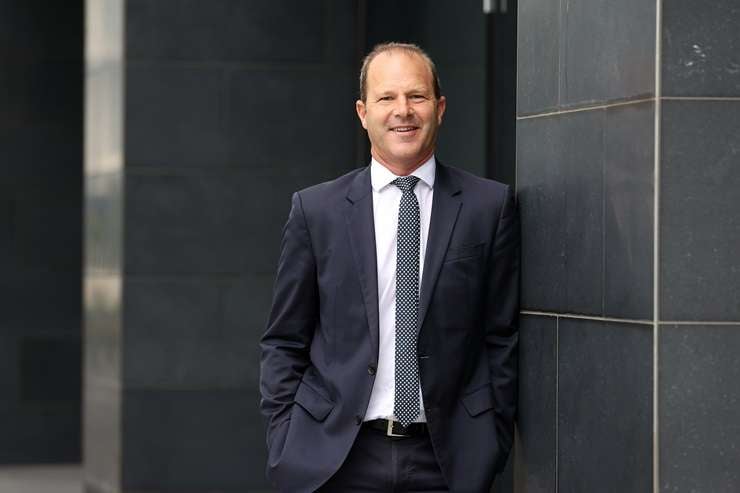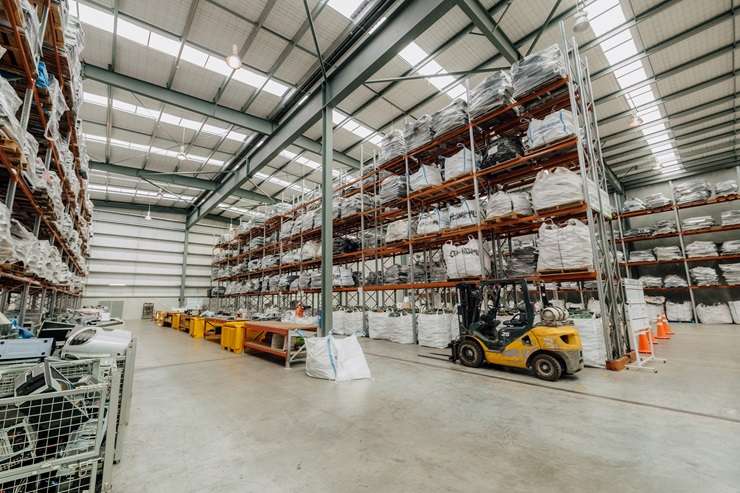
New Zealand’s commercial property market in 2024 has been one of the toughest in two decades, with high interest rates, remote working and online shopping leading to higher vacancy rates and soft rental growth.
Ryan Johnson, Bayleys’ national director of commercial and capital, said leasing volumes dropped away, and the cost of living crisis combined with high interest rates hit the market hard.
“You have to go back a long way to see investment sales as bad as it was in 2024. Leasing volumes certainly dropped away, and the cost of living combined with interest rates hit businesses around the country,” Johnson told OneRoof.
Bayleys’ figures show commercial property sales plummeted since 2021 in both volume and value and were sitting back where the market was in 2001-2002. Westpac’s commentary in early December showed the market had fallen around 10% since its peak in 2021 and the value of sales dropped below $6 billion over the 12 months to June 2024, the lowest in more than a decade.
 Bayleys national director of commercial and capital Ryan Johnson: “You have to go back a long way to see investment sales as bad as it was in 2024." Photo / Fiona Goodall
Bayleys national director of commercial and capital Ryan Johnson: “You have to go back a long way to see investment sales as bad as it was in 2024." Photo / Fiona Goodall
Bayleys’ head of insights and data Chris Farhi said sentiment surveys with commercial agents also placed the market as weak or neutral throughout last year. “2024 has been amongst the weakest markets we’ve ever seen in terms of actual transaction volumes,” he said.
Difficulties accessing finance and higher interest rates hit buyers, said Farhi. Compounding the sector’s difficulties were vendors who held on to unrealistic price expectations or were waiting for the market to rebound.
On the leasing side, tenants felt less confident in the economy, including the affordability of rent, while businesses were finding it harder to secure suitable properties at the rent they wanted to pay, as well as being far pickier than they had in the past.
While the Government had ordered staff back to the office, there were still many organisations running with hybrid working leading to reduced office footprints, said Farhi.
“I think the actual footprint reductions in office sizes aren’t as great as we might have thought they would be three years ago but there are higher levels of shared workspaces and overall smaller footprints,” he said.
Colliers national director of research Ian Little wouldn’t go as far as calling 2024 the worst year on record for commercial property, but said rising interest rates had stalled activity, with many investors and businesses “sitting on their hands”.
“I don’t know if it’s the worst ever but, if you’re looking at sales activity, the last two years have been very subdued, comparable to the post-GFC period.”
He said while remote working had some impact on leasing, the Government’s push for more in-office work could stabilise parts of the office market in 2025, benefitting hospitality and retail sectors in central business districts.
“I think getting people back into the office will bring a bit more certainty. More people coming back to the city on a more regular basis will help sectors like hospitality and retail,” said Little.
Despite the doom, there were some green shoots. Retail property showed some signs of recovery in the second half of 2024, buoyed by stabilising inflation and renewed consumer activity, and industrial property stayed strong throughout 2024.
The Warehouse store at Auckland’s Sylvia Park. The retail sector was in a better place in the second half of 2024. Photo / Jason Oxenham
“The areas that are a bit more positive at the moment are industrial sales and, interestingly, retail sales,” said Farhi.
“The OCR reductions have seen our brokers reporting higher levels of enquiries from both buyers and vendors, although this has been sluggish in translating into actual offers and transactions.”
Meanwhile, the industrial sector had benefitted from the same trends that had made retail challenging, said Little. “Businesses are needing space for logistics hubs and that is only growing.”
He said industrial property was an attractive passive investment where properties had good leases in place, were well managed and investors can take a hands-off approach.
He said retail was improving but businesses were now wanting premium sites. “They may have had five stores, and they’re reviewed that and decide they only need two, but they want them in the really premium sites.”
 Demand for industrial property in 2024 was strong, with the asset class performing well throughout the year. Photo / Supplied
Demand for industrial property in 2024 was strong, with the asset class performing well throughout the year. Photo / Supplied
Little said larger shopping malls were also adapting to changing consumer behaviour by transforming into community hubs, incorporating entertainment and events to draw foot traffic. “It’s not just about selling stuff anymore,” said Little. “It’s about bringing people in and keeping them longer.”
Looking ahead to 2025, they all anticipate stabilisation, and are optimistic there will be a modest recovery, with interest rates predicted to hover around 5-5.5%.
Bayleys was expecting an influx of commercial listings from February onwards. “A lot of vendors are getting their properties ready for February and we’re already seeing a significant amount of quality listings where the vendors are likely to transact, and that hasn’t been the case for the last three years,” said Johnson.
Colliers Top 20 Predictions for 2025 suggested challenging conditions would continue in the short-term and, falling interest rates would underpin a recovery in economic growth.
Forward indicators, such as business and investor confidence, were already rising, said Little.
“The strengthening economy will result in increased demand for property from both occupiers and investors, with momentum building as 2025 advances,” he said.
Little said a return to the office, improved retail spending and a strong industrial sector were all positives for the commercial property market this year.
- OneRoof
Take your Radio, Podcasts and Music with you









